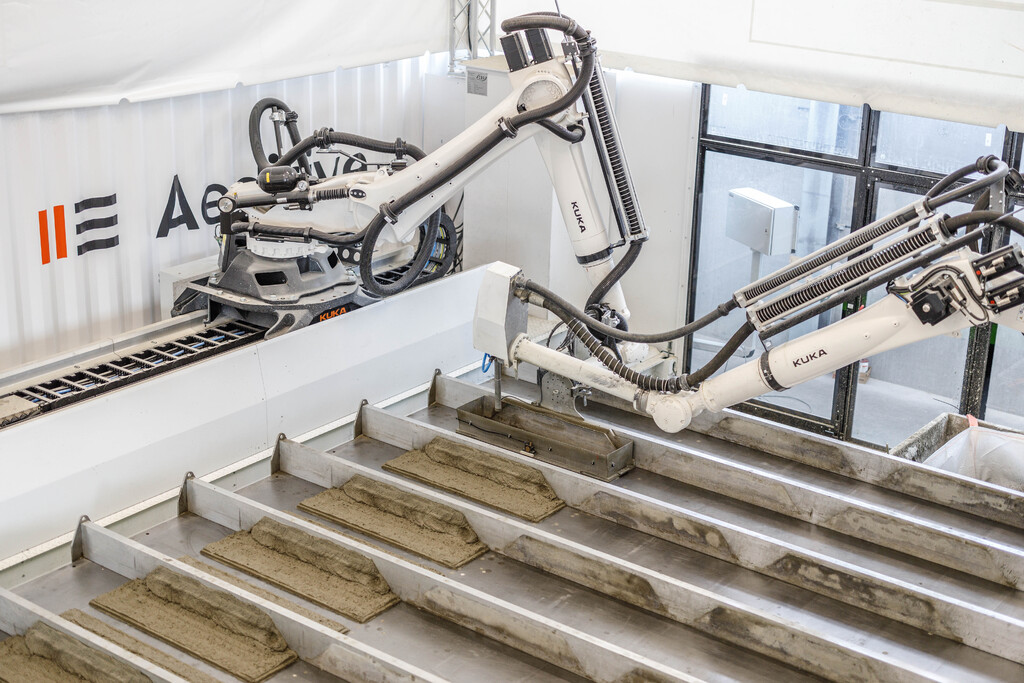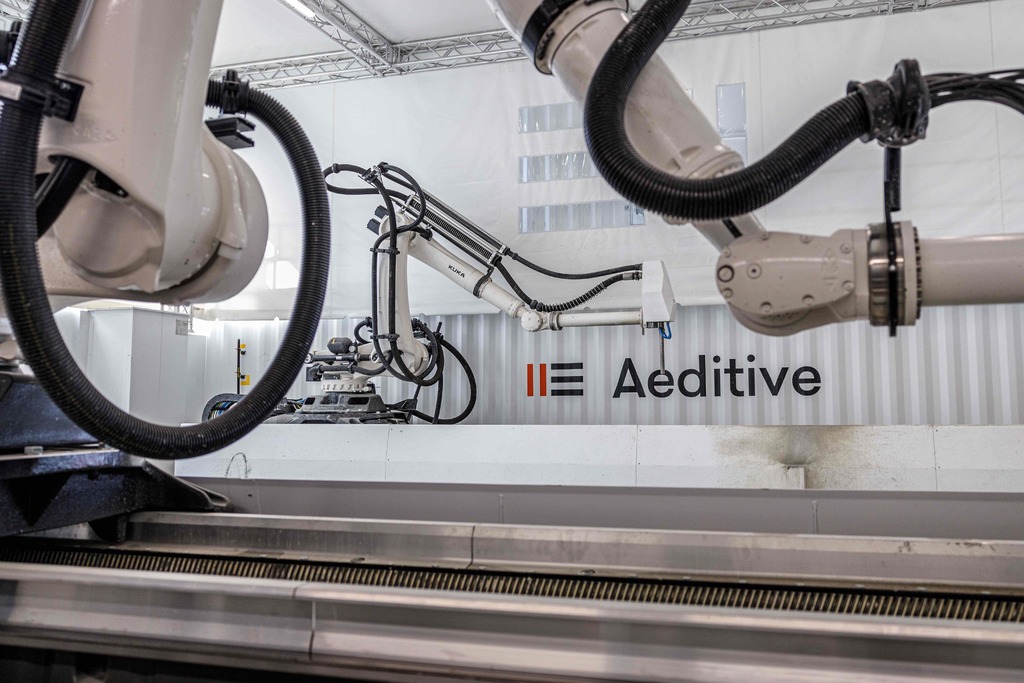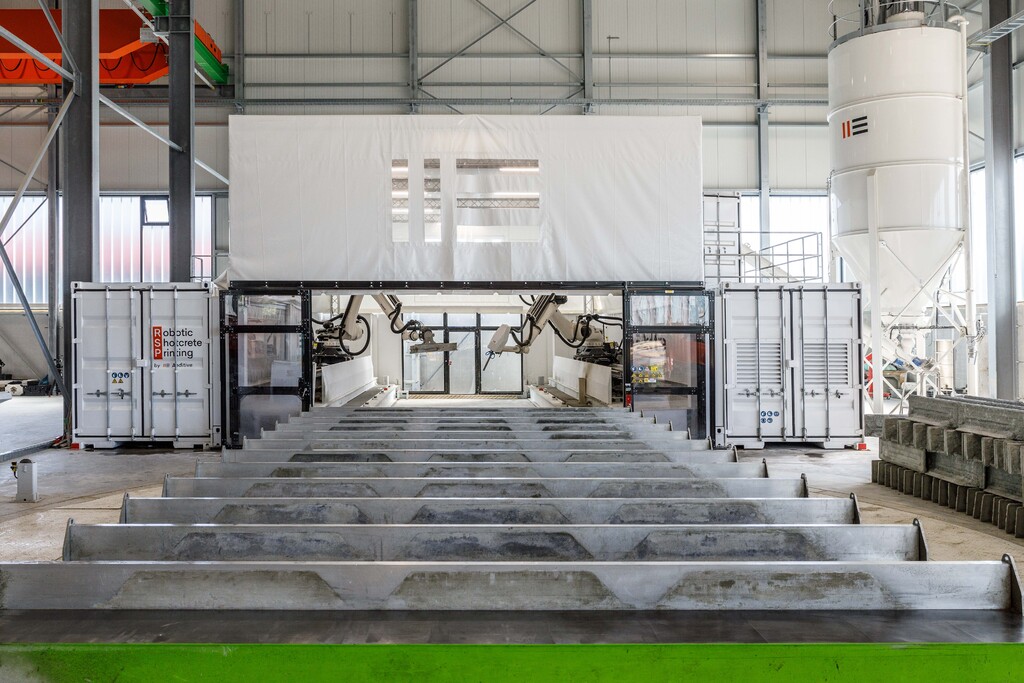Labour shortages, price hikes and growing environmental concerns – the construction industry faces the greatest upheaval in its entire history. Suppliers of digital technologies such as 3D printing promise mitigation through improved automation, lower costs and materials consumption and reduced waste. But what exactly are these new production methods about, and how do they affect traditional precast processes? Having recently introduced tech start-up Aeditive’s 3D Robotic Shotcrete Printing solution Concrete Aeditor, Black Forest-based Glatthaar Starwalls can provide some answers.
The order books of precast concrete manufacturer Glatthaar Starwalls are fuller than ever as construction companies move away from site cast concrete, a trend spurred by tight deadlines, higher demands on quality and more extreme weather conditions. But just like his industry peers, Glatthaar Starwalls Managing Director Mark Biesalski is struggling to find qualified, reliable workers to complete the jobs. His solution for ensuring long-term productivity and fulfilling delivery dates was to implement a robot-driven 3D printing system in the company’s new production facility in Schramberg.
At present, several commercial and research teams around the world are working to further advance this groundbreaking technique, following different approaches including extrusion, particle bed printing and shotcrete printing. The underlying methods and thus the resulting technological solutions differ greatly in terms of application domain, material properties and technical maturity.
Hamburg-based start-up Aeditive has developed a highly mature holistic 3D printing solution which is marketed under the Concrete Aeditor brand. The enabling technology of Concrete Aeditor is the Robotic Shotcrete Printing (RSP) method, which builds on standard shotcrete.


In the Glatthaar Starwalls facility in Schramberg, inside the Concrete Aeditor two robots go quietly about their business. The printer robots are the beating heart of the system, with one applying the concrete and the other taking care of auxiliary tasks such as finishing the surface or inserting built-in parts.
Earlier, a conventional steel basket reinforcement was positioned on a feeder pallet and moved into the printing area. The precast component is then created layer by layer. The shotcrete is applied with high kinetic energy to ensure excellent bond strength and to avoid "cold joints", while simultaneously minimizing shotcrete spray shadows. In the final step, the surface of the component is finished and smoothed according to customer requirements.
Production planning is also fully integrated: component parameters such as dimensions and specified surface quality are entered into the control system, which uses AI to calculate and implement the optimum process parameters and robot motion paths. After that, it is no more than the push of a button to set the robots in work. Nearby, the automated batching and dosing system continuously produces and supplies fresh concrete for the printing process, optimized for the component and its specific material requirements. Glatthaar Starwalls continues to procure cement and other raw materials from suppliers in the region maintaining short supply routes.
"The high level of automation helps overcome labour shortages, increases productivity and sparks new energy and ideas. It also makes workers’ jobs safer and more attractive, which is a considerable advantage in the highly competitive market for talent. But Concrete Aeditor not only saves manpower, but it is also more environmentally friendly: the 3D RSP process does not require any formwork, which significantly reduces the amount of waste generated in the manufacturing process – and it saves time, too. In addition, the print robots can realize highly optimized component geometries, because by flexibly moving the nozzle in all dimensions, the application of concrete can be reduced to what is structurally necessary. This means less use of material and lower weight, and so less emission of CO2 during the element’s production and its transport to the construction site. But equally important, Concrete Aeditor is a catalyst for innovation – the new options have set engineers’ minds racing, so that Glatthaar is already working on novel types of precast concrete components," explained Alexander Türk, CEO & Co-Founder of Aeditive GmbH.
More green synergy potential is on the horizon, as the 3D RSP process allows the use of more environmentally friendly, recycled concrete. Since the mixing process is fully controlled by the software, the use of new material blends can be adjusted and closely monitored at all times. In addition, sophisticated sensor technology ensures a high level of process reliability and provides valuable data for quality assurance. The combination of alternative materials and innovative production processes could be a small but important step towards a circular concrete economy.
Watch video on CPT-tv:

"After careful evaluation, we opted for Aeditive's Concrete Aeditor, not only because it eliminates the need for formwork, but also because it allows the integration of reinforcements, which makes it particularly well suited to support our infrastructure projects."
"We are pleased we can improve our environmental footprint, while at the same time reducing our material and transport costs. And best of all, we are stimulating innovation and growth."
Glatthaar Starwalls Managing Director Mark Biesalski